Recommendations to keep in mind when designing in order to have successful products in Medium Detail Plastic (PLA).
![]()
![]()
![]()
![]()
Material Info
Polyamide (Nylon) is the most versatile material able to be used in a variety of applications. It can be incredible flexible when it is thin and strong enough for heavy use when thick.
The look and feel of the models can be described as grainy and slightly porous.
The models are built layer by layer. A roller strews a thin layer of nylon powder on a platform and a heat beam solidify the powder on specific points depending on the design, this way your model is created.
Disclaimer:
Bounding Box (size)
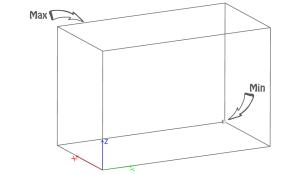
The bounding box represents the size we are able to print and post-process at once.
Min X + Y + Z ≥ 10mm
In order to be able to print your model, each of its pieces must be greater to those dimensions.
If the bounding box of your model is not bigger than our minimum, try scaling it up or making it thicker or enlarging some of its parts/features or any combination of the above.
Max 200x157x140
In order to be able to print your model, each of its pieces must fit within those dimensions.
If the bounding box of your model is bigger than our maximum, try scaling it down or removing unnecessary features/parts or cutting it to smaller parts or any combination of the above.
Wall thickness (minimum)
It represents the minimum wall thickness required in order to be able to produce your model, ship it and reach you unharmed. A wall could also be defined as the distance between two parts which form a closed and solid mesh.
Tip: The thicker the model, the more solid and rigid it gets. We recommend thin wall in case you want your model to be flexible. The geometry of the model plays a crucial role on the solidity. Walls thicker to 2mm start losing their flexibility and become rigid.
Supported (min 1.0mm at print size)
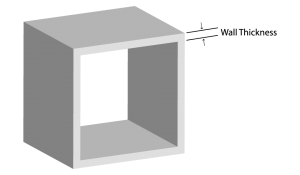
A wall is considered supported if it is connected to two or more walls on at least two of each sides.
If any supported walls are not thicker than the minimum required, try making them thicker, or adding supports or both.
Unsupported (min 1.0mm at print size)
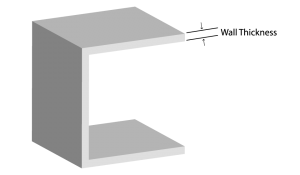
A wall is considered unsupported if it is connected to other walls on one side only.
If any unsupported walls are not thicker than the minimum required, try making them thicker or adding supports or both.
Tip: Be aware that bigger parts with thin wall might droop due to gravity.
Wires
Wires are long and thin features of a model. As wire is considered a part whose length is two times greater than its width.
Tip: In general, wires follow the same rules as walls; nevertheless, due to their delicate nature you should be extra cautious when designing them.
Supported (min 1.0mm thick at print size)
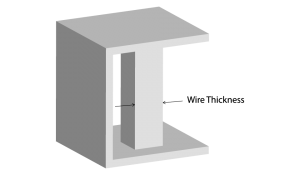
A wire is considered supported if it is connected to two or more walls on at least two of each sides.
If any supported wires are not thicker than the minimum required, try making them thicker, or adding supports or both.
Unsupported (min 1.1mm thick at print size)
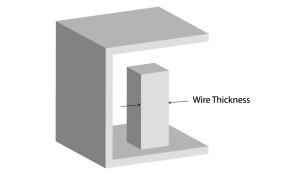
A wire is considered unsupported if it is connected to other walls on one side only.
If any unsupported wires are not thicker than the minimum required, try making them thicker, or adding supports or both.
Details
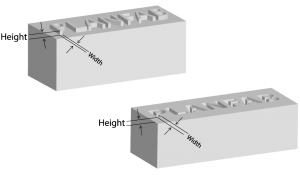
As details are considered all those features whose length is less than two times their width. Details could be either embossed or engraved on a surface.
Engraved
Non-readable
Minimum line thickness ≥ 2.0mm
Minimum depth ≥ 0.6mm
Readable
Minimum line thickness ≥ 3.0mm
Minimum depth ≥ 0.6mm
Embossed
Non-readable
Minimum line thickness ≥ 0.5mm
Minimum depth ≥ 0.5mm
Readable
Minimum line thickness ≥ 0.8mm
Minimum depth ≥ 0.5mm
Make sure your detail’s length and width is greater than the minimum required, or else they won’t be clear and visible (the larger the detail, the more visible and clear it gets).
If any details on your model are not greater than the minimum required try making them bigger or removing them.
Tip: Don’t forget, geometry plays a crucial role on the visibility of your details.
Escape holes
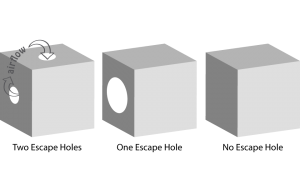
Escape holes are the exit route of the excess powder trapped in a hollow model.
Minimum diameter for models with one escape hole: 15mm (at print size)
Minimum diameter for models with at least two escape holes: 10mm (at print size)
If the model has complex geometry with many separate hollow cavities, make sure there is an escape route for every cavity. In general multiple escape holes are recommended in order to create airflow for the powder to exit and access to all cavities. If your model does not have sufficient escape holes, we will not be able to clean properly.
If your escape holes are not sufficient and over the minimum requirements, try enlarging them or adding more or filling the hollow space or any combination of the above.
Clearance (1.0mm at print size)
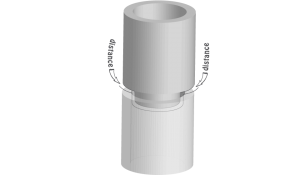
Clearance is the distance between any two parts. If the clearance is not adequate, it is possible that the parts might stick to one another creating problems such as preventing mechanical parts from moving.
If your clearance is not over the minimum required, try making it greater or fuse the parts together if their independence is unnecessary.
Interlocking and enclosed parts
Yes. Polyamide (Nylon) can produce interlocking and enclosed parts as long as the clearance is over the minimum.
Multiple parts per model file
Yes. Multiple parts per model file can be processed and produce in Polyamide (Nylon).
